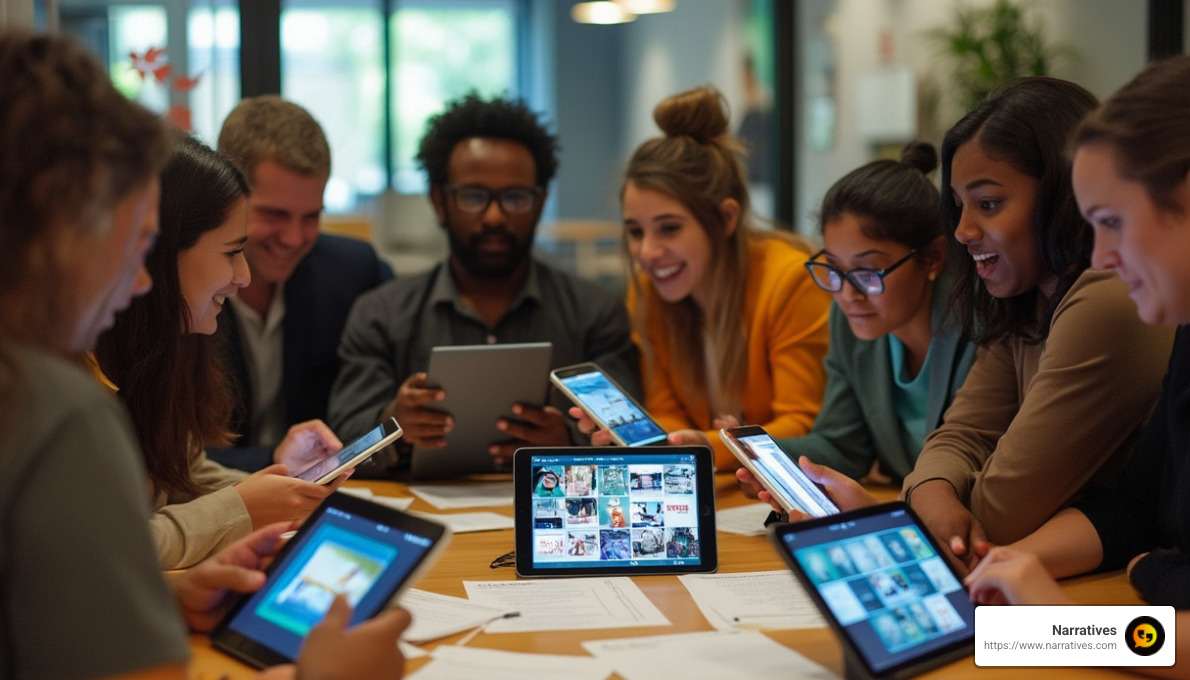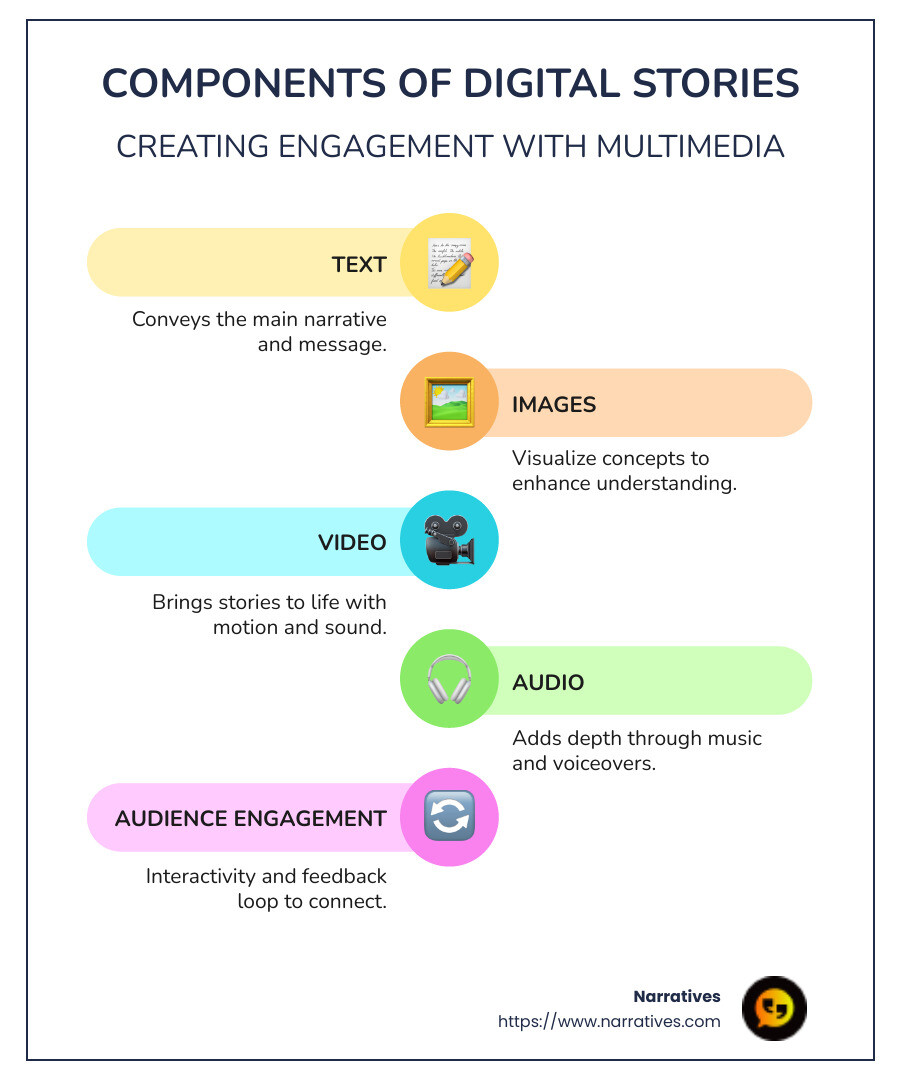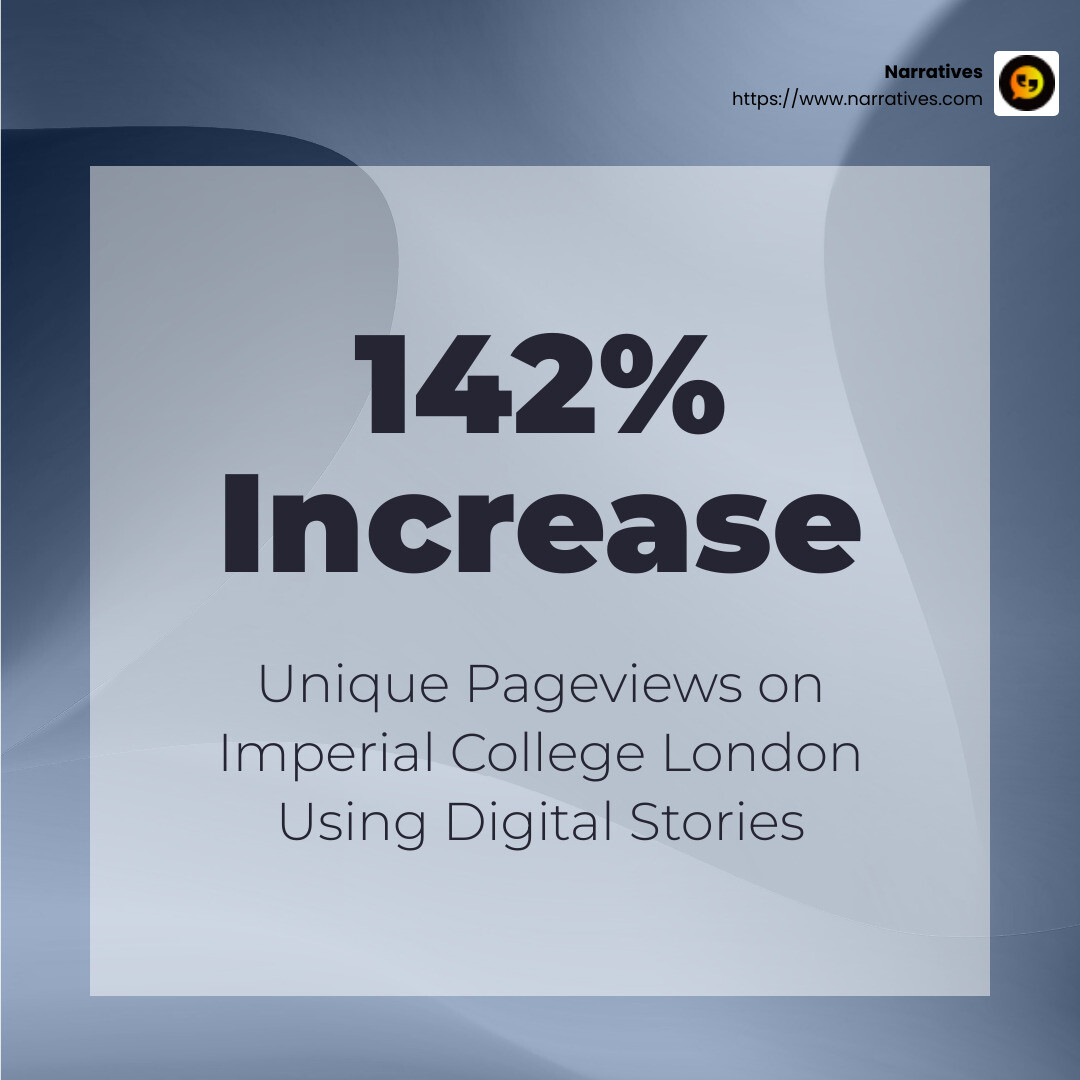The Art of Digital Storytelling: Your Ultimate Guide

The Power of Digital Stories
Digital stories are changing the way we communicate and connect. This new form of storytelling uses multimedia elements like images, video, and sound to create immersive content that resonates deeply with audiences.
- Digital stories combine text, images, video, and audio for an engaging experience.
- They cater to various learning types and preferences with vibrant visuals and soundtracks.
- These stories promote higher-level thinking by requiring users to analyze and create.
In today's world, the authenticity and emotional impact of digital storytelling are crucial for organizations aiming to make a lasting impression. By effectively merging traditional narratives with cutting-edge technology, digital stories engage audiences in a way that static content just cannot match. The evolution of digital reality—from augmented and virtual experiences to mixed reality—continues to push the boundaries of what we understand storytelling to be.
According to research, "Stories...can change the very neural pathways in our brains," demonstrating the profound impact they have on our emotions and actions. In the non-profit sector, this is especially powerful, as compelling stories have the potential to drive social change, improve community engagement, and lift underrepresented voices. For values-driven organizations with limited resources, digital storytelling offers a sophisticated yet accessible tool for amplifying their missions and connecting authentically with their audiences.

Basic digital stories terms:
- digital storytelling apps
- digital storytelling guide for educators
- interactive digital storytelling examples
Understanding Digital Stories
What are Digital Stories?
Digital stories are a modern twist on an ancient art. They weave together text, images, video, and audio to create immersive content that engages and resonates with audiences. Imagine a short film, but one that you can interact with. That's the essence of a digital story.
These stories are not just about telling; they're about experiencing. They invite audiences to dive into the narrative, exploring elements at their own pace. This interactivity makes the experience more personal and memorable. And with the rise of digital tools, anyone can become a storyteller, sharing their unique perspective with the world.
Types of Digital Storytelling
Digital storytelling comes in various forms, each with its own style and purpose. Here are some popular types:
Longform Features: These are in-depth narratives that explore a topic thoroughly. They often include a mix of multimedia elements, like videos, infographics, and interviews, to provide a comprehensive view. Think of a documentary, but in digital form.
Brand Stories: Companies use digital stories to connect with their audience emotionally. By sharing their values and mission through storytelling, brands can build trust and loyalty. It's not just about selling a product; it's about building a relationship.
Educational Content: Digital storytelling is a powerful tool in education. It transforms traditional lessons into engaging experiences, helping students understand complex concepts through interactive content. This approach caters to different learning styles, making education more inclusive and effective.
Interactive Content and Multimedia Elements
The magic of digital stories lies in their interactivity. By incorporating multimedia elements like maps, timelines, and videos, storytellers can create a dynamic experience that keeps audiences engaged. Tools like scrollytelling and data visualization add layers to the narrative, allowing users to explore and interact with the content in meaningful ways.
Incorporating these elements not only improves the storytelling experience but also helps convey complex information in an easily digestible format. For instance, a digital story about climate change could include interactive maps showing temperature changes over time, making the data more relatable and impactful.
Digital stories are more than just a trend; they're a powerful way to connect with audiences on a deeper level. By combining traditional storytelling techniques with modern technology, they offer a unique platform for sharing stories that inform, inspire, and engage.
The Impact of Digital Storytelling
Benefits for Non-Profits
Digital stories are changing the game for non-profits. These immersive narratives help organizations highlight their mission, engage with communities, and amplify underrepresented voices.
Social Impact: By using digital storytelling, non-profits can create powerful stories that resonate with audiences. This approach not only raises awareness but also inspires action. For example, organizations like Habitat for Humanity have used digital stories to showcase the impact of their work, encouraging more people to get involved.
Community-Driven Storytelling: Digital stories give communities a platform to share their experiences and challenges. This form of storytelling fosters empathy and understanding, making it easier for audiences to connect with the cause. Underrepresented voices find a stage to be heard, bringing attention to issues that might otherwise be overlooked.
Case Studies of Successful Digital Stories
Let's look at some standout examples of digital storytelling success:
Imperial College London: By embracing digital storytelling, Imperial College London saw a 142% increase in unique pageviews and a 50% boost in average time on page. Their COVID-19 timeline story is a prime example of how educational content can engage and inform audiences. 
Honda: In its first year of using digital stories, Honda achieved an 85% increase in dwell time and a 47% rise in click-through rates. This demonstrates the power of digital storytelling in enhancing brand engagement and driving customer interaction.
NBC News: NBC News created a compelling collection of personal stories from Asian Americans and Pacific Islanders, highlighting the rise in anti-Asian discrimination in the USA. This project not only informed but also created a deeper connection with audiences by sharing real, human experiences.
Digital storytelling is more than just a tool; it's a bridge connecting organizations with their audiences. By leveraging this medium, non-profits and brands alike can create meaningful, lasting impacts.
Tools and Techniques for Creating Digital Stories
Popular Digital Storytelling Tools
Creating digital stories requires the right tools to bring your narrative to life. Here are some popular options that can help you craft engaging stories:
Shorthand: This platform is perfect for creating immersive, longform content. Shorthand allows you to integrate text, images, and videos seamlessly, making it ideal for crafting detailed narratives without needing any coding skills.
Adobe Spark: If you're looking for a tool to create visually appealing, image-based stories, Adobe Spark is a great choice. It offers a variety of templates and a gallery of ready-to-use images to help you design short, linear stories. While it excels at visual projects, it doesn't support interactive content.
Canva: Known for its user-friendly design features, Canva is a versatile tool for creating everything from infographics to presentations. With its drag-and-drop interface and customizable templates, Canva makes it easy to design professional-looking visuals that improve your storytelling.
Techniques for Effective Storytelling
To make your digital stories stand out, consider incorporating these techniques:
Scrollytelling: This technique involves creating a narrative that unfolds as the reader scrolls through the page. It's a dynamic way to present information, allowing you to layer text, images, and animations to guide your audience through the story. The Council for the European Union used scrollytelling to effectively illustrate climate-neutral initiatives.
Data Visualization: Transform complex data into engaging visuals with tools like Piktochart. By presenting data in a visually appealing way, you can make your story more accessible and impactful. The US Census Bureau effectively used maps and visual design to highlight the importance of demographic data.
Interactive Maps: Platforms like ESRI Story Maps and StoryMap JS allow you to create stories centered around geographic locations. By layering narrative text, images, and multimedia content on maps, you can provide a more immersive experience. This is particularly useful for stories that involve travel or location-based events.
By leveraging these tools and techniques, you can create digital stories that not only inform but also captivate your audience. Whether you're a non-profit aiming to share impactful narratives or a brand looking to engage customers, these resources can help you tell your story effectively.
Frequently Asked Questions about Digital Stories
What is the role of digital stories in education?
Digital stories in education are powerful tools for enhancing learning experiences. They merge traditional storytelling with modern digital tools, creating an engaging and interactive environment for students. This approach caters to various learning styles by incorporating multimedia elements like images, videos, and audio.
In primary and secondary education, digital stories can simplify complex concepts. For instance, using digital storytelling to explain scientific processes or historical events can make the content more relatable and easier to understand. A fifth-grade class used digital storytelling to illustrate the anatomy of the eye, making a technical subject accessible and memorable.
Moreover, digital storytelling encourages students to take ownership of their learning. By creating their own stories, students develop research, writing, and technology skills. They also learn to express their thoughts and ideas creatively, which supports higher-level thinking.
How can digital stories reduce school dropout rates?
Digital stories can play a crucial role in reducing school dropout rates by making education more appealing and relevant to students, especially those with learning difficulties. The Digital Stories project, for example, aims to lower dropout rates by using digital techniques based on a multi-sensory learning model. This approach helps students feel more connected to the educational environment.
By offering a more engaging and supportive learning experience, digital stories help students overcome negative attitudes toward school. They provide an alternative way to engage with the curriculum, making it more accessible and enjoyable. This, in turn, can lead to improved attendance and reduced dropout rates.
What are some examples of digital storytelling in marketing?
In marketing, digital stories are used to create immersive and memorable brand experiences. They often outperform traditional content in terms of engagement metrics like time-on-page and click-through rates. Here are a few examples:
Imperial College London: By using digital storytelling, they achieved a 142% increase in average unique pageviews and a 50% higher average time on page. Their timeline story on the COVID-19 pandemic is a standout example of how digital stories can effectively communicate complex information.
Honda: In their first year of using digital storytelling, Honda saw an 85% increase in dwell time and a 47% rise in click-through rates. This demonstrates the power of immersive content to capture and maintain audience interest.
NBC News: Following a rise in anti-Asian discrimination, NBC News produced a compelling digital story featuring personal narratives from Asian Americans and Pacific Islanders. This approach not only raised awareness but also created an emotional connection with their audience.
Digital storytelling allows brands to present their narratives in a way that resonates with their audience, making it a valuable tool for marketers looking to improve their brand's reach and impact.
Conclusion
Storytelling has evolved into a powerful tool for connection and change. At Narratives, we believe in the transformative power of digital stories to lift underrepresented voices and inspire meaningful action. As a dedicated digital storytelling partner for non-profits and purpose-driven organizations, our mission is to help these groups share their impact stories in a way that resonates deeply with audiences.
Why Choose Narratives?
We specialize in crafting emotionally resonant video and multimedia content that builds trust and increases visibility for non-profits. Our approach is centered around community-driven storytelling that not only highlights the challenges faced by these organizations but also their triumphs and the positive change they bring to their communities.
Our Approach to Non-Profit Storytelling
Elevating Voices: We focus on amplifying the stories of those who are often unheard. By showcasing personal narratives and experiences, we create content that fosters empathy and understanding.
Inspiring Action: Our digital stories are designed to do more than inform; they inspire viewers to take action and support the causes that matter most to them.
Building Trust: Through authentic storytelling, we help non-profits build trust with their audiences, which is crucial for long-term support and engagement.
The Future of Storytelling
As digital storytelling continues to evolve, we are committed to staying at the forefront of this exciting field. By leveraging the latest tools and techniques, we ensure that our partners can tell their stories in the most effective and impactful way possible.
Join us at Narratives as we harness the power of digital stories to make a difference in the world. Whether you're a non-profit looking to share your mission or an organization seeking to connect with your community, we are here to help you every step of the way.


